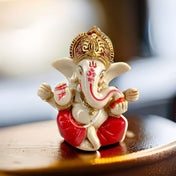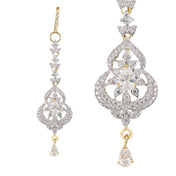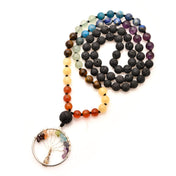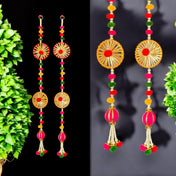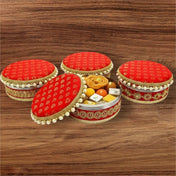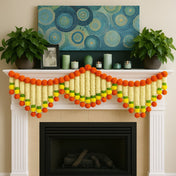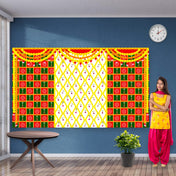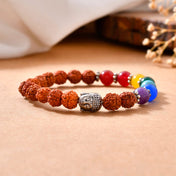Introduction
Karva Chauth, also known as Karwa Chauth, is an important Hindu festival celebrated mainly by married women in India. The celebration of Karva Chauth has not only rooted itself deeply within the cultural fabric of India but has also transcended borders, finding resonance among Indian communities dispersed worldwide, notably in the USA. This festivity serves as a poignant reminder of love, devotion, and familial bonds upheld through the ages.
The essence of Karva Chauth lies in its regional diversity, with various parts of India adding their unique hues to this vibrant tapestry of traditions. As diaspora communities carry forward these customs, the festival's cultural significance continues to evolve and thrive, bridging the gap between tradition and modernity in a harmonious blend. During this festival, married women fast from sunrise to moonrise for the well-being and long life of their husbands.
The day is marked by rituals that include adorning oneself with beautiful attire and jewelry, which often includes purchasing special items like designer decorative karwachauth channi thali or a karvachauth thali, each holding its own significance. This special collection curated for Karwa Chauth offers a variety of items that are essential for the celebration. These gifts are not just material possessions; they symbolize love and respect towards the husband and family.
Historical and Mythological Significance of Karva Chauth During Which Hindu Women Observe the Fast

The rich tapestry of Karva Chauth legends is deeply embedded in Hindu mythology, offering profound insights into the festival's essence. Two key stories illuminate the origins and spiritual significance of this day:
- Queen Veeravati’s First Fast: Veeravati, a devoted wife, observed her first fast on Karva Chauth following her mother’s advice. Despite breaking the fast prematurely due to her brothers’ insistence, she was granted life once her husband prayed to the goddess. This legend highlights the power of fasting combined with unwavering faith.
- Savitri’s Devotion to Yama: Savitri’s story is emblematic of love and courage. When Yama, the god of death, came to claim her husband’s soul, Savitri's steadfast devotion and intellect compelled Yama to restore her husband's life. This myth underscores the themes of devotion, longevity, and protection.
These narratives reinforce the spiritual core of Karva Chauth—expressing profound love and safeguarding marital bonds through sacred observance.
Core Rituals, Symbolism and Significance of Karwa Chauth Across All Regions

The rituals of Karva Chauth unite women in a shared expression of devotion, marked by distinctive practices that hold deep cultural meaning.
1. Sargi Meal
Before dawn, married women receive the sargi, a carefully prepared meal from their mothers-in-law. This nourishing offering includes fruits, sweets, and dry fruits, providing strength for the demanding fast ahead. The act symbolizes maternal care and intergenerational bonds.
2. Fasting Rules
The fast is observed strictly from sunrise to moonrise, with no intake of food or water. This abstinence reflects profound commitment to the husband’s health and longevity. The discipline involved embodies love and sacrifice central to the festival’s ethos.
3. Evening Puja
As dusk approaches, women gather in community spaces or homes for a ceremonial puja. Ritual prayers are accompanied by storytelling recounting Karva Chauth legends, reinforcing the spiritual significance and fostering collective identity.
4. Moon Viewing through a Sieve
The fast culminates as the moon rises. Women view its reflection through a decorative sieve before looking at their husbands. This symbolic act filters blessings and purifies intentions. Following this, husbands offer water or food to their wives, marking the joyful breaking of the fast and reaffirmation of marital bonds. To enhance these rituals, particularly during the evening puja, many families incorporate a beautifully crafted Karwa Chauth thali, which serves as a significant part of the celebration.
Karwa Chauth is Celebrated Across Different Regions of India

1. Northern India (Punjab, Haryana, Uttar Pradesh)
The lively celebrations of Karva Chauth in Northern India showcase the rich cultural traditions and unique characteristics of each region, adding joy and significance to the festival.
Punjabi Karva Chauth Traditions
Punjab is famous for its energetic mehendi ceremonies held on the night before Karva Chauth. These gatherings are filled with vibrant henna art applied to the bride’s hands and feet, creating a warm and festive atmosphere. Women come together in close-knit groups, singing folk songs that tell stories of marital love and devotion while sharing laughter and stories. This social aspect strengthens bonds among women, blending spiritual observance with joyful friendship.
Traditional Attire
In Uttar Pradesh and Haryana, bright saris or lehengas dominate the day’s attire with a preference for auspicious colors like red and gold. These colors symbolize prosperity, fertility, and marital bliss—core themes associated with Karva Chauth. The fabrics are often embroidered with intricate patterns or adorned with zari work, reflecting the craftsmanship valued in these regions. Accessorizing with traditional jewelry such as bangles, necklaces, and earrings enhances the celebratory spirit while honoring long-standing customs.
Community Gatherings
Singing traditional songs during community get-togethers is a cherished part of northern India rituals on Karva Chauth. These songs serve as oral histories preserving cultural values surrounding marriage, devotion, and protection of husbands. Storytelling sessions often accompany puja ceremonies where elders recount Karva Chauth legends to younger generations, fostering cultural continuity. Women also exchange gifts or sweets as tokens of goodwill, reinforcing emotional ties within families and neighborhoods.
The practices in Punjab, Haryana, and Uttar Pradesh demonstrate how regional identity adds depth to the festival's experience while keeping its main focus on love, loyalty, and safeguarding within marriage. Each custom contributes to a vibrant tapestry that brings traditional Indian values alive in contemporary settings.
2. Western India (Rajasthan, Gujarat)
Rajasthan showcases a unique custom during Karva Chauth where women exchange intricately decorated clay pots known as karvas. This ritual symbolizes unity and prosperity among women in the community. On the other hand, Gujarat's celebrations are marked by a vibrant display of elaborate jewelry and ethnic attire that beautifully reflect the region's rich cultural aesthetics. Both regions bring their own flair to the festivities, adding depth to the tapestry of Karva Chauth traditions across India.
3. Central India (Madhya Pradesh)
In Central India, specifically in Madhya Pradesh, Karva Chauth is celebrated with unique customs and rituals:
- Emphasis on specific prayer rituals: The people of Madhya Pradesh dedicate prayers to Lord Shiva and Parvati during Karva Chauth. These prayers are believed to bring about marital harmony and strengthen the bond between husbands and wives.
- Use of folk songs: Folk songs play a significant role in narrating local legends associated with the festival. These songs not only add to the festive atmosphere but also pass down cultural stories through generations, enriching the celebration of Karva Chauth in Madhya Pradesh.
4. Jammu & Kashmir Region
In the Jammu & Kashmir region, Karva Chauth is celebrated with unique adaptations that reflect the rich Kashmiri culture. Here are some key aspects of the festivities in this region:
1. Special Prayers and Worship
Kashmiris have their own set of prayers and rituals that are performed during Karva Chauth. These may include specific prayers dedicated to the goddess Parvati, who is worshipped for the well-being and longevity of husbands.
2. Mud Idols Crafted for Worship
In addition to traditional idols made of clay or metal, Kashmiri women often create mud idols (known as "kuth") for worship during Karva Chauth. These idols are intricately crafted and hold significant cultural value in the region.
3. Clothing Styles Blending Tradition and Festival Colors
The clothing styles worn during Karva Chauth in Jammu & Kashmir are a beautiful blend of traditional Kashmiri garments and vibrant festival colors. Women may wear intricately embroidered pherans (long robes) or salwar kameez outfits, adorned with colorful dupattas (scarves) to celebrate the occasion.
These unique customs showcase the rich cultural heritage of Jammu & Kashmir while also embracing the essence of Karva Chauth celebrations.
5. Southern India (Andhra Pradesh & Telangana) – Atla Tadde / Karadaiyan Nombu
Southern India celebrates fasting festivals that resonate deeply with the themes of Karva Chauth Celebrations in Different Regions of India. In Andhra Pradesh and Telangana, the observance is known as Atla Tadde or Karadaiyan Nombu, reflecting a unique cultural expression tied to marital devotion.
1. Shared Core Values
These festivals, while distinct in name and rituals from the Northern India (Punjab, Haryana, Uttar Pradesh) or Western India (Rajasthan, Gujarat) traditions, emphasize unwavering commitment to the husband's well-being and longevity. The fasts symbolize love and sacrifice, mirroring the broader spirit found throughout India's diverse regional practices.
2. Fasting Customs
Women undertake a strict fast from early morning until moonrise without consuming food or water, paralleling the discipline seen in northern India rituals. The fast is broken only after performing evening prayers dedicated to Lord Shiva and Goddess Parvati or other local deities associated with marital harmony.
3. Distinctive Food Traditions
Post-fast celebrations feature special dishes unique to these regions. In Andhra Pradesh, Atlu—thin rice flour pancakes often filled with spiced lentils or jaggery—hold special significance. This culinary tradition not only nourishes but also honors the day's sacredness through age-old recipes passed down generations.
4. Cultural Significance
These observances serve as occasions for women to gather in communal harmony, sharing stories and songs that reinforce familial bonds and cultural identity. The festival’s regional nuances enrich the tapestry of Indian matrimonial customs alongside practices in Central India (Madhya Pradesh), Jammu & Kashmir Region, and Eastern India (Bengal & Northeast).
6. Eastern India (Bengal & Northeast) – Broader Observances
Karva Chauth Celebrations in Different Regions of India reveal fascinating local nuances, especially in Eastern India where the festival embraces distinct cultural expressions. In Bengal, the observance often includes teenage boys fasting alongside women. This practice symbolizes aspirations for future marital harmony and longevity, highlighting a community’s wish to nurture strong family bonds from a young age. Such involvement underscores the collective nature of the festival beyond its primary focus on married women.
Local beliefs in Bengal and the Northeast shape variations in rituals while preserving the core essence of Karva Chauth’s devotion and protection themes. For example:
- Fasting methods may differ slightly, with some communities opting for partial fasts or consuming specific items to maintain tradition without strict abstinence.
- Prayers often incorporate regional deities alongside traditional Karva Chauth legends, blending Hindu mythology with local folklore.
- Community gatherings might include folk songs and storytelling distinctive to Bengali culture, enriching the festival’s emotional resonance.
These adaptations stand alongside well-known Northern India (Punjab, Haryana, Uttar Pradesh), Western India (Rajasthan, Gujarat), Central India (Madhya Pradesh), Jammu & Kashmir Region, and Southern India (Andhra Pradesh & Telangana) celebrations. Each region contributes vibrant threads to the cultural tapestry of Karva Chauth, illustrating how tradition thrives amid diversity while fostering unity through shared values.
Karva Chauth Puja Celebrations Among Indian Diaspora – Focus on USA

Karwa Chauth in the USA has evolved into a vibrant celebration that reflects both the rich heritage of Indian culture and the dynamic, fast-paced lifestyle of the diaspora. Indian communities across metropolitan hubs like New York, San Francisco, Chicago, and Houston observe this festival with heartfelt devotion while adapting rituals to suit their modern environments.
Blending Tradition with Contemporary Living
- Many working professionals balance demanding schedules with the day-long fast, showing immense dedication to preserving cultural values.
- Virtual gatherings and community events hosted by cultural organizations enable collective worship and storytelling about Karva Chauth legends.
- Social media platforms amplify awareness and share creative ways to celebrate Karva Chauth 2025 USA, connecting families spread across states.
Support from Online Ethnic Stores
Retailers such as LoveNspire have become indispensable for diaspora celebrations by offering:
- Authentic traditional attire including saris and lehengas in auspicious colors.
- Jewelry collections that complement festival aesthetics.
- Gifting essentials designed to honor emotional ties central to Karwa Chauth.
The accessibility of these products online bridges geographical distances, allowing Indian-Americans to maintain cultural continuity effortlessly.
Navigating Challenges
The observance of fasting customs within foreign settings brings unique challenges:
- Adjusting meal timings around work commitments requires careful planning.
- Maintaining hydration and energy during fasting amid busy urban life demands resilience.
- Creating meaningful rituals in homes without extended family support encourages innovation, such as group pujas or exchanging virtual blessings.
This adaptability highlights how Karwa Chauth thrives beyond Indian borders, nurturing bonds and inspiring pride among the diaspora while honoring timeless traditions.
The Contemporary Perspective of Karwa Chauth Vrat – Empowerment & Criticism

The festival of Karva Chauth occupies a complex space in contemporary discourse, particularly through a feminist perspective on Karva Chauth. Critiques frequently highlight how the fasting ritual may reinforce traditional gender roles by emphasizing women's primary duty as caretakers of their husbands' health and longevity.
Feminist critiques argue:
- The fast symbolizes women’s submission to patriarchal expectations.
- The ritual perpetuates ideals centered on sacrifice and self-denial tied to marital status.
- It may limit women’s autonomy by framing devotion chiefly through husband-centric practices.
Counterbalancing these critiques, many women embrace Karva Chauth as a celebration of empowerment and identity. For them, the festival:
- Honors their dedication and commitment within marriage.
- Creates opportunities for social bonding through community gatherings and shared rituals.
- Offers an expression of cultural pride that transcends mere obligation.
- Women often articulate that the fast is not about subjugation but about choosing to participate in a meaningful tradition that strengthens emotional ties. The act of fasting becomes a symbol of agency when viewed as a personal decision rather than an imposed duty.
This duality reflects evolving attitudes where Karva Chauth stands both as a cultural heritage marker and a site for negotiating modern womanhood—balancing reverence for tradition with contemporary values of independence and choice.
LoveNspire: Promoting Cultural Heritage through Handmade Ethnic Products for the Celebration of Love

LoveNspire is a brand dedicated to promoting cultural heritage and celebrations around the world. We believe that every culture has its own unique traditions and stories to tell, and we strive to showcase these through our carefully curated collection of handmade ethnic products.
Celebrating Diversity with Handmade Ethnic Products
At LoveNspire, we understand the importance of preserving and celebrating cultural diversity. Our mission is to bring together artisans and craftsmen from various regions, allowing them to share their artistry with a global audience. By offering a platform for these talented individuals, we hope to not only support their livelihoods but also keep traditional crafts alive for future generations.
Authenticity and Quality: Enhancing Festive Experiences
As part of our commitment to authenticity, we source our products directly from artisans who have honed their skills over years of practice. This ensures that each item we offer is not only beautifully crafted but also true to its cultural roots. Whether it's intricate handwoven textiles or intricately carved wooden decor, every piece tells a story that deserves to be heard.
We understand that festivals hold immense significance in different cultures, serving as occasions for family gatherings, community celebrations, and spiritual rituals. That's why we go above and beyond to curate collections specifically tailored for various festive occasions such as Diwali, Eid, Christmas, and more.
By incorporating LoveNspire's ethnic products into these celebrations, we aim to enhance the overall experience for individuals belonging to the Indian diaspora or any other community celebrating their respective festivals abroad. Our thoughtfully designed offerings serve as reminders of home – evoking nostalgia while creating new memories in unfamiliar surroundings.
Through our efforts, we hope to inspire others not only appreciate but also actively participate in cultural celebrations across borders. It is through such exchanges that we can foster understanding among different communities and build a more inclusive world.
Conclusion
Karva Chauth is a vibrant symbol of cultural unity, bringing together various traditions and stories from different parts of India. The festival's celebrations in different regions of India highlight a beautiful blend of rituals, clothing, and community spirit, each contributing its own unique element to the overall experience. As families celebrate Karva Chauth outside of India, especially in the USA and other diaspora communities, this timeless festival fosters a connection to ancestral roots while embracing modern lifestyles.
- Preservation of cultural heritage thrives through adaptation in new environments.
- Expressions of love and devotion resonate deeply across generations.
- Community gatherings create lasting bonds that transcend geography.
Karva Chauth is more than just a ritual; it is a heartfelt celebration that connects generations and places, honoring the enduring values of commitment and togetherness.










